Vibration measurements are made in order to identify when preventive or corrective repairs are required on machinery. These repairs are made in order to reduce or eliminate the noise that damaged equipment make. This prevents catastrophic failure of the equipment. Vibration measurements are frequently made on process control equipment and rotating machinery such as the shafting on large sea going vessels. In process control equipment, excessive vibrations limit processing speeds or cause machine failure. On vessel shafting, they can be an indicator of the shaft being out of alignment, which Read More
What is a Goniometer?

A goniometer is a device that either measures an angle or moves an object along a fixed point to a specific angular position. Goniometers have many uses and can be found in a number of industries. They measure range of motion, determine direction, and measure an object’s dimensions. Goniometers are relatively simple in design and have been used since 1780. How a Goniometer Works A goniometer consists of two limbs, usually made of plastic or wood, that are connected by a joint and are usually attached to a circular piece Read More
Future Flying Cars
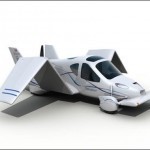
A flying car is a personal flying machine that does not require special equipment, runways, or traffic routes. Flying cars differ from commercial aircraft such as airliners, helicopters, and jets. Flying cars are designed to hold only a few people and are no larger than a regular automobile. While flying car designs have been in the works for over a century, it is still unclear whether a flying car would operate via magnetic forces, anti-gravity, or standard aerodynamics. What is clear, however, is that society is on the verge of Read More
What is Stereoscopic Vision?
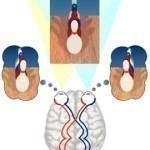
The term stereoscopic vision refers to the human ability to view with both eyes in similar, but slightly different ways. This allows humans to judge distance, which develops their ability to have true depth perception. Historically, the human’s ability to view the world through stereoscopic sight has given him/her a significant advantage over entities and animals in the wild that do not possess this capability. How does Stereoscopic Vision Work? For people and animals that have stereoscopic vision, each eye sees a similar, but slightly different image. This difference is Read More
Fresnel Lens Projector
A projector is able to accomplish a projection with the help of a combination of lenses along with the other technical things. A Fresnel lens projector is one which has different Fresnel lenses placed in the projector. Fresnel Lens Fresnel lens was invented by a French physicist, Augustin-Jean Fresnel. These lenses have a large aperture and a short focal length. They are very thin and are lighter in weight allowing more light to pass through. Thus, are used in the objects where bulky lenses are prohibited. An Overhead projector (OHP) Read More
What is a Strain Gauge?
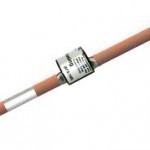
Strain gauges measure the amount of stress or strain placed on an object. Arthur C. Ruge and Edward E. Simmons invented them in 1938. The most common type of strain gauge in use today consists of an insulating, flexible backing that supports a metallic foil pattern. The gauge is placed on the object with an adhesive. As the object comes under strain or gets deformed, the foil deforms and causes the electrical resistance to change. The change in resistance is then measured with a Wheatstone bridge. How does a Strain Read More
Magnesium Anodes
Sacrificial anodes are used in cathodic protection systems in order to protect the primary metallic component(s) from corrosion. A magnesium anode is a type of metal used on boats and ships in order to protect the vessel’s other metallic parts. It first protects the area’s less active metal and acts as a corrosion barrier. How Do Magnesium Anodes Work? Magnesium anodes are more active than the base metal and therefore oxidizes easier. The anode’s electrons are stripped and conducted to the base metal that becomes the system’s cathode. This cathode Read More
What is an Anemometer?
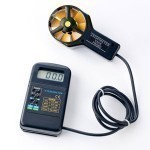
Anemometers are meteorological devices that measure wind velocity and pressure. They are normally found in weather stations, but are also used on ships, oil rigs, at airports, and for personal purposes. The devices derive their name from the Greek word “anemos,” which means wind. There are currently two anemometer categories: pressure and velocity. Velocity Anemometers There are currently two types of velocity anemometers, one that uses a wind vane to operate and one that does not. Of these two, the cup anemometer is more popular and consists of four cups Read More
Ultrasonic Humidifier

An ultrasonic humidifier is a device that uses ultrasonic sound waves to create water droplets from a built-in water reservoir. Ultrasonic humidifiers are used in many homes, businesses, and warehouses to properly humidify an area without using heat. Because ultrasonic humidifiers do not use heat, they use much less electricity (approximately 93% less) than other types of humidifiers and users do not have to wait for the water to boil. Ultrasonic humidifiers are usually portable and can be turned on and off instantly. How does an Ultrasonic Humidifier Work? Ultrasonic Read More
Linear Actuator
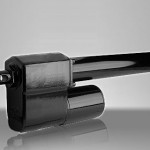
A linear actuator is a mechanical device that makes a linear motion, usually via a hydraulic pump or electromagnetic gear. Other forces can be used to create linear motion. The different types of linear actuators include screw, wheel and axle, cam, hydraulic pump, pneumatic, piezoelectric, and electro-mechanical. Linear motors, wax motors, and telescoping linear actuators can also produce linear motion. How a Linear Actuator Works While all linear actuators depend on an external, non-linear force to drive a piston back and forth, different types of linear actuators work in different Read More


Share on: